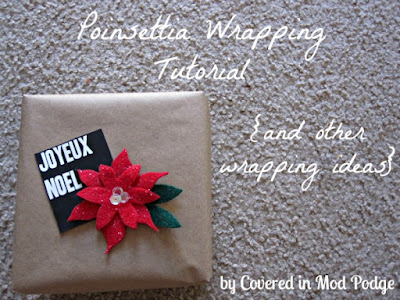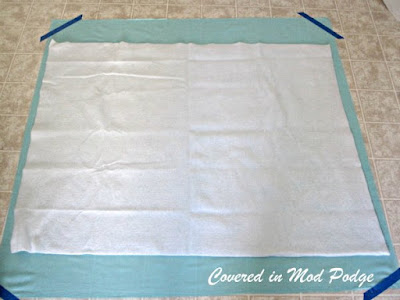I originally share this tutorial over at
The Ribbon Retreat. I absolutely adore how this quilt turned out. Check out how easy it is to make your own!
I'm going to let you in on a secret...quilts scare the living daylights out of me! I have not had a lot of success when it comes to quilting. However, I just adore the look of all the great chevron quilts that have been shared all over blog-land. I have a big old crush on
Riley Blake's Chevrons. When I saw the large chevron print I knew I could have the look of a chevron quilt without most of the scary parts of quilting!
Want to make your own? For a"craft" sized quilt {36" X 45"}, you'll need:
1 yd of
Riley Blake's Large Chevron {I used the Grey/White}
1 1/4 yd of fabric for quilt back {I used
Bella Solids in Robins Egg Blue}
1/2 yd of fabric for binding {I used
Bella Solids in Bleached White}
Thread that matches the quilt front, the quilt back, and the binding
Craft sized binding {you can buy this at your local craft store}
As evidenced by the fact that quilts scare me, I am not a quilt expert. I'm going to share with you how I did things. If this process isn't what you're used to, quilt your way! There are a number of quilt tutorials out there that have helped me figure out this process. Check out my
quilting Pinterest board for additional tutorials!
There's no need to pre-wash your fabrics. You'll want that bit of shrink to kick in after your quilt is finished. Go ahead and start by ironing all of your fabrics.
Find yourself a large, clean work space. For me, that was my kitchen floor. Spread your quilt back out, wrong side up. Smooth it out well and tape down the corners. This will keep things from shifting around as you add your other layers.
Next, place your batting in the middle of your backing. There should be extra fabric on all sides of your batting. This allows for things to shift a bit during the quilting process without leaving you in a pinch.
Finally, put your chevron fabric, right side up, in the middle of your batting.
I like to pin baste my quilts. You can find these curved safety pins in the notions area of your local sewing supply store. The curve in them lets you grab all the layers without disturbing the layout. I tried quilting with regular safety pins and it was a big old pain. I highly recommend getting yourself these little guys.
Start pinning in the center of your quilt. Make sure you pin in the middle of whatever colored chevron you're NOT going to sew along.
Keep pinning working your way out from the middle, smoothing out your fabric as you go. You should place a pin every three or four inches. This will keep everything in place while you machine quilt.
You'll want to roll your quilt up to move it to your sewing machine. Roll it in from both directions. This will let you start your quilting in the middle.
You'll want to quilt along the top of one color of the chevrons. I quilted along the top of each of the white chevrons.
Use a thread on top that blends into your quilt top and a thread in your bobbin that blends into your quilt bottom.
Make sure you backstitch when you start your quilting row. Sew down the one side until you get to the point. Keeping your needle down, turn your quilt and start sewing up the other side. You'll repeat this processes until you reach the other side of your quilt. Backstitch at the end, too!
I cannot sew a straight line to save my life. This quilt is very forgiving, as you're not piecing anything together.
Once you've finished quilting, trim all the layers so they are even with your quilt top.
Now, take out all of your pins. I was lazy and didn't do this before I started binding. I broke my first needle because I hit a safety pin. Learn from my mistake! :)
Time to make your binding. Start out by cutting off the selvedges and evening out your binding fabric. Then, cut yourselves 4 strips that are 2.5 inches wide by the length of the fabric.
You'll make your continuous binding strip by joining all four strips together. Start by laying out your fabrics right sides together and perpendicular to each other. Sew a diagonal line from the top left to bottom right corner, making sure to backstitch. Now, cut off the fabric leaving 1/4 inch seam allowance. Repeat this process with the rest of your strips.
Press open all of the diagonal seams. Then, fold your fabric in half, wrong sides together, and press. This will leave you with your continuous binding strip ready to attach to your quilt!
Start pinning your binding to your quilt back. Leave about a 6 inch tail before your first pin. You'll line up the raw edges of your binding with the edge of your quilt. Pin all the way to 1/4 inch before your first corner.
Start sewing your binding to your quilt using your presser foot for seam allowance. Be sure to backstitch.
Stop when you get 1/4 inch from your corner. Leaving your needle down, raise your presser foot and turn your quilt so you sew off the edge. Backstitch! Remove your quilt from your machine.
Now, fold your binding up, using your stitch as a guide. Then, fold your binding down so that it is even with the top of your quilt.
Start pinning and pin all the way down to 1/4 inch from the next corner.
Start sewing 1/4 inch from the corner, backstitching. You just mitered your corner! Keep repeating this process until you have completed all four corners.
Stop sewing your binding when you're about 10 inches from where you started. Backstitch and remove your quilt from your machine.
Fold each side of the binding back on itself so that they meet in the middle. Using a fabric marker, mark 1/4 inch on each side of the binding.
Open up both sides of the binding and pin together. You'll have to fold your quilt a bit to be able to do this.
Now, sew the bindings together. You'll use that 1/4 inch mark as your seam allowance.
Trim along the 1/4 inch line and then press your seam open. Fold everything back up and pin the rest of the binding to your quilt.
Sew the last bit of your binding down.
You've made it to the home stretch! Now its time to sew your binding to the front of your quilt. Make sure your top thread matches your binding and your bobbin matches your quilt bottom.
Fold your binding over and pin well. Pin really, really well. Pin every inch. There's a lot of layers here. Things will be less likely to shift on you if you pin really well. Did I mention that you should pin well?
Pinning your corners requires a little bit of finesse. Bring your binding up towards the front. Then, wiggle the corner of your quilt into the corner of the binding. Pull the first side down and then fold the second side over and pin.
When sewing your binding, you'll want to move your needle all the way over to the left. Sew as close to the edge of the binding as you can. Go slow so that you don't accidentally slip off the binding.
When you get to a corner, sew until your needle first enters the other side of the binding. Then, with your needle down, turn your quilt and continue sewing.
Be sure to backstitch at the beginning and the end of the quilt!
Throw that bad boy in the washer with just a little bit of detergent. After its dry, enjoy all of its crinkly goodness!
I'd love to see any quilt you make using this tutorial. You can email me at coveredinmodpdoge {at} gmail {dot} com.
The Ribbon Retreat provided me with the fabric used for this quilt in exchange for me writing this tutorial. You can check out my
disclosure section if you have any questions!
I'm linking this bad boy up as my entry for
The CSI Project's Favorite Project of 2012 Challenge.

Come party with me!
C.R.A.F.T,
Shwin & Shwin,
Tip Junkie,
Southern Lovely,
Uncommon Designs,
Somewhat Simple,
Yesterday on Tuesday,
House of Hempworths,
52 Mantels,
The CSI Project,
Serenity Now,
Tatertots and Jello,
Family Ever After,
The Grant Life,
Positively Splendid,
I {Heart} Nap Time,
It's Overflowing






























































